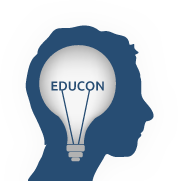MAKE Social Studies Relevant: How to Connect Maker Ed Projects to Real-World Problems
Our goal is for participants to understand the power of Maker Education in helping students to see their role in working towards social and environmental justice. One way to help our students be agents of change in creating a more just world is to give them opportunities for designing and making and allow them to see the impact they can have over objects and systems in their world. We will walk through participants through the design thinking process in order to begin prototyping a green energy solution.
Exposing students to the human centered process Design Thinking requires them to ask, “How can I create things that would make something easier for someone else?” This process requires students to interview people about their needs and develops empathy in our students. It asks them to define a problem, ideate possible solutions, create a prototype and then test it. In testing their ideas, students observe it’s impact, ask for feedback and make revisions.
Participants will gain familiarity with the Design Thinking so they can apply it to Maker Education they embark on with their students.
Conversational Practice
Participants will have the opportunity to discover and discuss the superpowers they bring to collaboration. As a group they will explore what combination of superpowers lends itself to the most productive working group. Once groups are formed participants will have a chance for hands-on application of Maker Education to real-world problems and have an opportunity to do a Gallery Walk of other groups’ work.
Icebreaker (10 minutes): Participants will get in small groups to assess their own “superpower” using What’s Your Superpower? cards. The objective is to identify individual strengths and natural talents that can help to increase teamwork when applied inside a diverse group. There will be a brief presentation of research supporting the benefit of increased diversity in problem-solving outcomes.
Introduction to Friends’ Central Maker Ed Program, Description of Green Energy Project and introduction of Presenters (10 minutes)
Outline for Group Work Time to Engage in Maker Ed Project Based on Puerto Rico’s Ongoing Power Outages after Hurricane Maria (10 minutes). Design Thinking Process will be condensed due to time constraints, but the process will be thorough enough that participants will leave with an understanding of how to structure this kind of project for students over several class periods.
Step 1: Research/”Deep Dive”
Step 2: Focus: Develop Empathy & Define the Need
Step 3: Generate Ideas
Step 4: Prototype
Step 5: Collaborate
Split into Groups. Participants will be asked to split into groups according to their identified superpower. The goal will be to form groups of 4-6 educators who all identified different talents to improve the diversity of idea and solutions.
Group Work Time
Steps 1-2: (15 minutes) Research/Deep Dive Using resources provided by presenters and ability to use online methods, teams will gain an understanding of: Hurricane Maria, its effect on Puerto Rico’s electrical power system, basic scientific knowledge of hurricanes, generators, and green energy.
A need statement will be generated before brainstorming begins in the next step.
Example Need Statements:
Schools in Puerto Rico need an alternate source of energy in order to open on a daily basis for students.
Puerto Rican workers need restoration of energy sources in order to go back to prior employment.
Step 3: (5 minutes) Generate Ideas through Brainstorming
Step 4: (20 minutes) Prototyping Groups will use everyday materials plus green energy supplies to build a rough prototype of one of their ideas.
Step 5: (5 minutes) Collaborate Groups will leave their work displayed for feedback. Participants are encouraged to walk around, engage with other projects, and leave constructive feedback, questions, and comments for the group to consider before they would continue building. Participants will leave with an understanding of how to continue the cyclical Design Thinking process with students.
Wrap-Up Conversation: (15 minutes) Queries: How is this work connected to your school’s mission & vision and/or your responsibility as a teacher? How could you adapt this model for different age groups? What other real-world issues would fit nicely into this kind of Maker Ed/Design Thinking project? How could you connect students to community and global resources to “deepen the dive”? How can you assess your students’ learning? Ongoing? Final?
Conversation Links
-
Christine Butry
-
Carl AckermanOffice of Teaching and Learning - School District of Philadelphia
-
Patrick ColganScience Leadership Academy
-
Brie DaleyFriends' Central School
-
John Loeper
-
Michael Darfler
-
Rachel BackCouncil Rock High School- North
-
Lydia Felty
-
Richard MurphyNorth Colonie Central School District
-
Kim MorrisPhotoWings
-
Tim MillerSchool of the Cathedral
-
D. Joseph Corr
-
John KamalScience Leadership Academy
-
Kieran RyanNorth Colonie Central School District
-
Ross HamiltonBuilding 21
-
Jacqueline BrookesYarmouth High School
-
Ray kresge
-
Kathleen WalshScience Teacher at Building 21 Philadephia ( non-selective Public High School) and Director of Youth Engineering and Science, inc. (an Educational Non-Profit Organization
-
Karen BlumbergThe Brearley School
-
Colin SamuelThe Brearley School
 EduCon 2018
EduCon 2018
No comments have been posted yet.
Log in to post a comment.